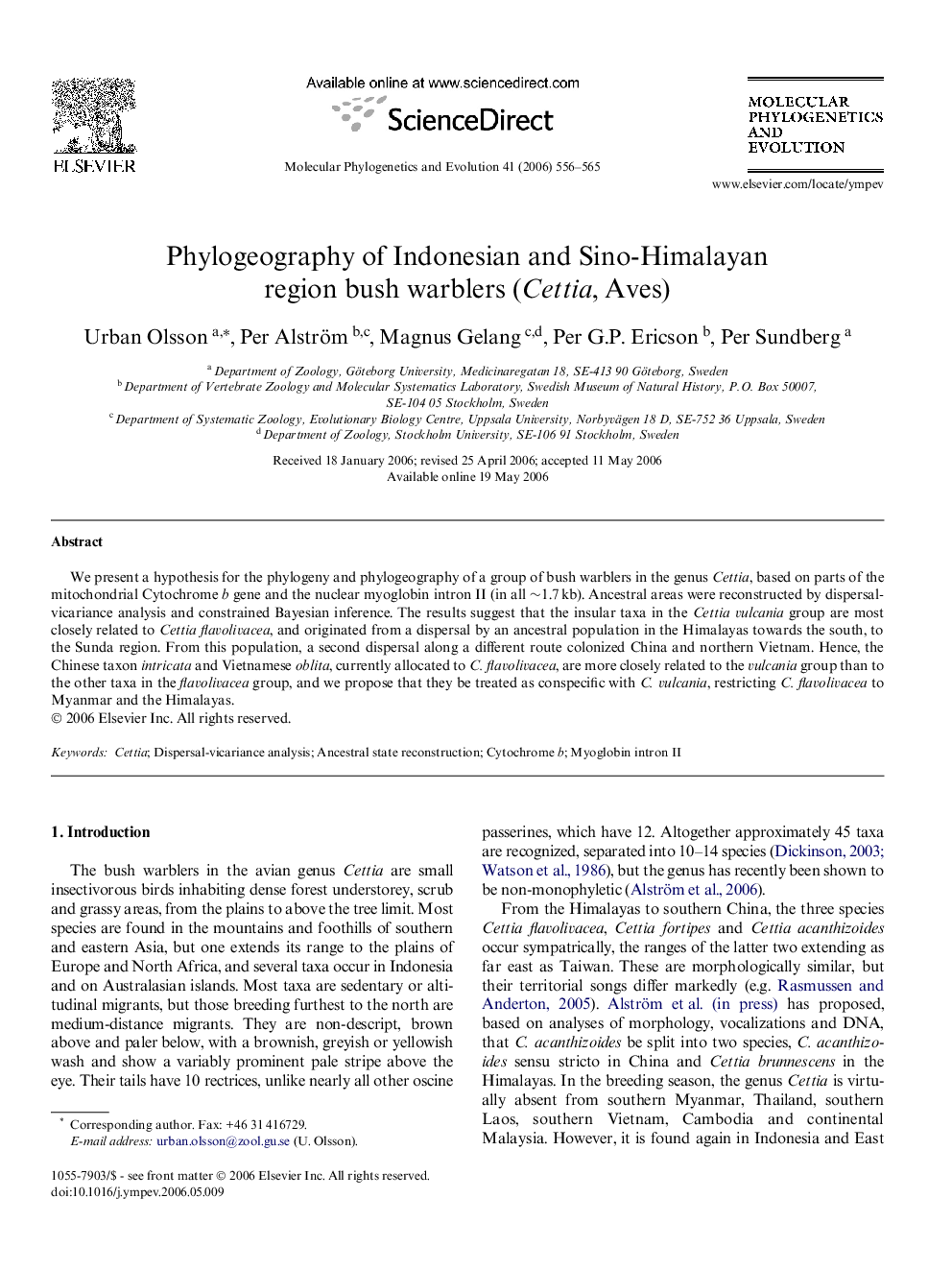| Article ID | Journal | Published Year | Pages | File Type |
|---|---|---|---|---|
| 2835808 | Molecular Phylogenetics and Evolution | 2006 | 10 Pages |
We present a hypothesis for the phylogeny and phylogeography of a group of bush warblers in the genus Cettia, based on parts of the mitochondrial Cytochrome b gene and the nuclear myoglobin intron II (in all ∼1.7 kb). Ancestral areas were reconstructed by dispersal-vicariance analysis and constrained Bayesian inference. The results suggest that the insular taxa in the Cettia vulcania group are most closely related to Cettia flavolivacea, and originated from a dispersal by an ancestral population in the Himalayas towards the south, to the Sunda region. From this population, a second dispersal along a different route colonized China and northern Vietnam. Hence, the Chinese taxon intricata and Vietnamese oblita, currently allocated to C. flavolivacea, are more closely related to the vulcania group than to the other taxa in the flavolivacea group, and we propose that they be treated as conspecific with C. vulcania, restricting C. flavolivacea to Myanmar and the Himalayas.
